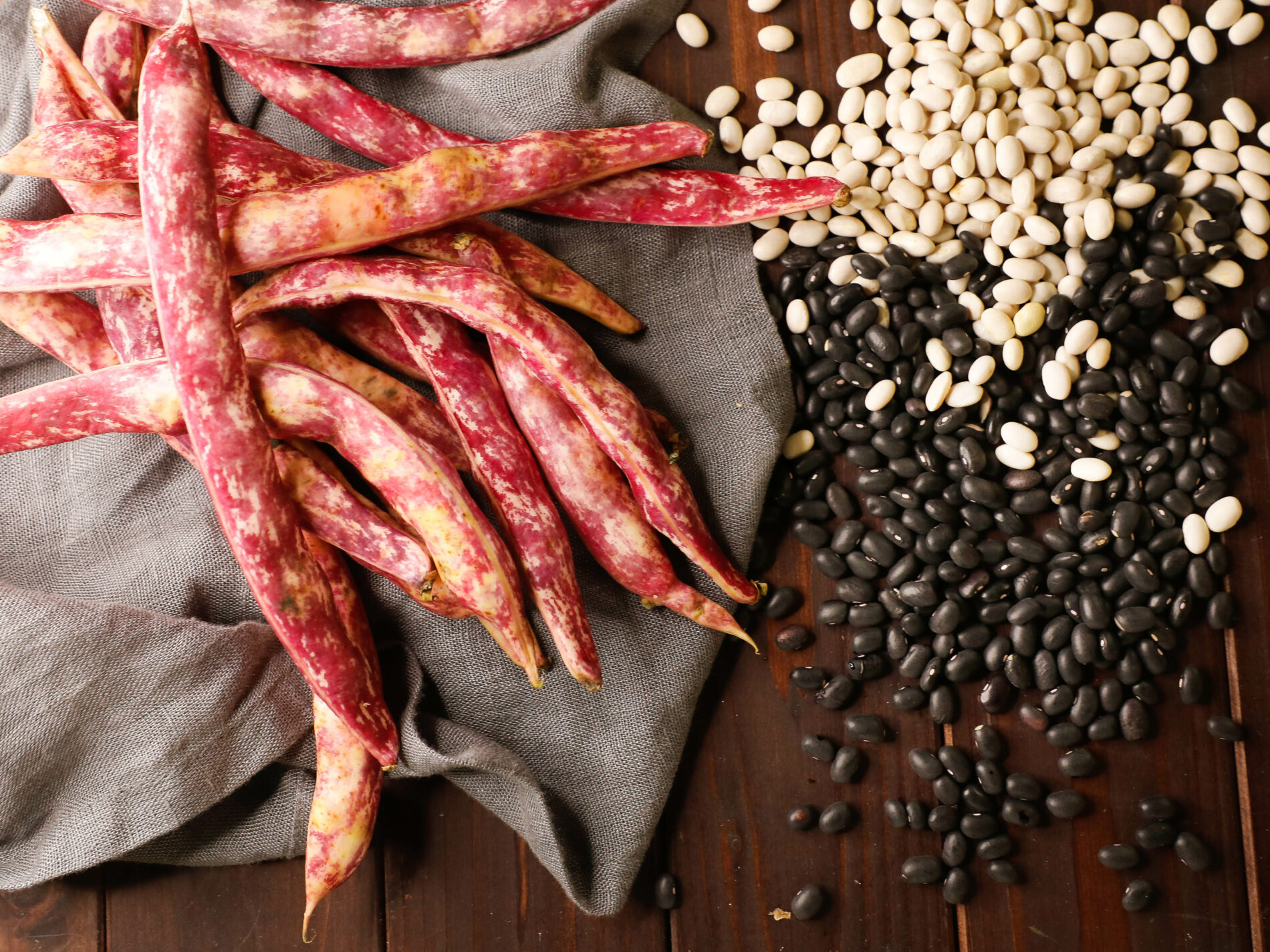Beans have a pretty awesome scientific name that reads like Phaseolus vulgaris. Hence is the rhetorical question: has anyone in history called them vulgar?
This corny joke might sound great to anyone not familiar with the basics of Latin. The Latin word vulgaris may sound indecent for our ears. But it really means usual, common, commonplace. That’s actually why Phaseolus vulgaris is also known as the common bean. Just an ordinary bean for everyday cooking, so to say.
Beans as climbers and runners
This common bean has a really long history of cultivation. People literally from every continent (except Antarctica, of course) grew them for quite a long time.
And wild beans had that special feature – they climbed up high during growth. Logically enough, eventually, scholars started to classify them, thanks to their peculiarity, as climbing or pole beans. But there are also runner beans. They don’t like climbing as others do, they prefer running.
Beans – the diverse seed varieties
There are so many bean varieties. We could start a separate blog devoted only to this genera: fava, kidney, cannellini, anasazi, fayot, lima, mung, navy, pinto, adzuki. And the list goes on and on.
The diversity is truly tremendous, and the cooking possibilities are endless. It’s even hard to pick a single bean variety to start with.
But why don’t we try white beans today? They are easy to find and easy to handle. And the dish they’ll be featuring will be fasolada. It’s a Greek soup of dry beans, vegetables, and oil.
But of course, such a simple dish couldn’t be assigned to only one region. Similar soups can be found all over the world. The Arabic version is called fasoulia, and it’s cooked in Syria, Yemen, Egypt, Iraq, Palestine.
Get ready for this delicious soup
Put 500 g of dry white beans in a pot. Fill it with enough water to cover them and let them soak overnight. Drain them the next day, wash thoroughly, drain again and set aside.
Now it’s time for the veggies. Chop 2 sprigs of celery and 2 medium carrots into 1,5 cm pieces. Coarse chop 1 onion and thinly slice 4-6 cloves of garlic.
Put the pot on the stove, turn the heat to medium-low and add some olive oil. When the oil is hot, toss in the vegetables. Sauté for 20 minutes. When excess liquid is evaporated, add 1 tbsp of tomato paste. Then sauté for 1-2 minutes while constantly stirring.
Now get your hands on the beans and give them to the veggies. For taste, add 2-3 bay leaves, a spring of rosemary, and one bouillon cube. Cover everything with enough water (appr. 2 litres) and simmer everything for 60-80 minutes. Check the soup periodically in case more water is needed.
When time is up, season the fasolada with salt and pepper. Then remove from the heat and serve along with some feta cheese, kalamata olives and a toasted piece of bread. Sprinkle the soup with chilli flakes and some extra virgin oil. Quick and delicious.











What do you think?